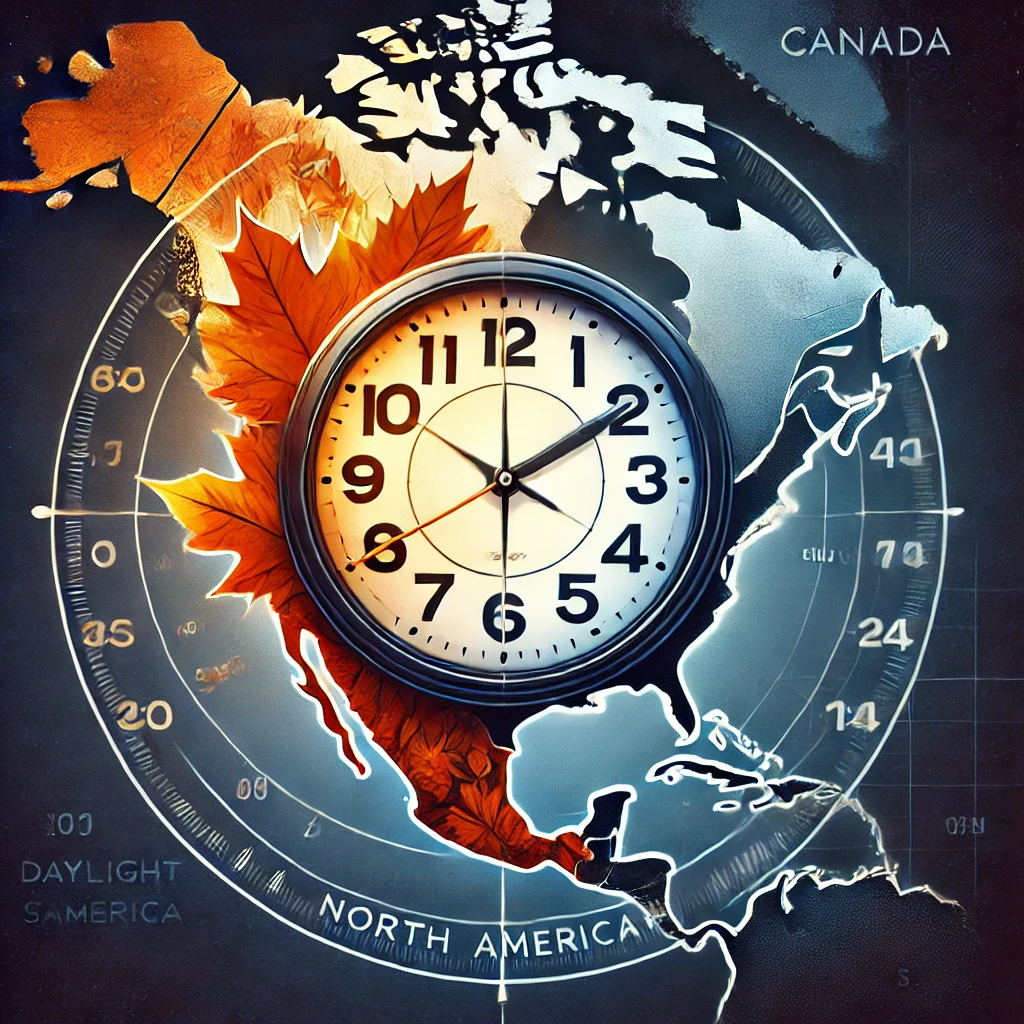Daylight Saving Time 2024: When Clocks ‘Fall Back’ in Canada and the U.S.
- October 22, 2024
- 0
Time to “fall back” as Daylight Saving Time for 2024 comes to an end. People living in Canada and the United States will set their clocks an hour
Time to “fall back” as Daylight Saving Time for 2024 comes to an end. People living in Canada and the United States will set their clocks an hour

Time to “fall back” as Daylight Saving Time for 2024 comes to an end. People living in Canada and the United States will set their clocks an hour back on November 3, 2024, at 2:00 AM local time. This yearly shift marks the switch to Standard Time, giving everybody an hour of extra sleep, and the days are going to be shorter because winter is near.
When Does Daylight Saving Time End?
Canada: All participating provinces and territories will be setting their clocks an hour back on Sunday, November 3, 2024, at 2:00 AM.
United States: The DST will end in all observing states at 2:00 AM on Sunday, November 3, 2024.
Both countries observe the same schedule to make the time keeping easy between these borders.
Canadian Time Zones Ending DST
Most of Canada observes daylight savings time, with the exceptions being areas of Saskatchewan and some in northern British Columbia. Here’s when major time zones will change:
Atlantic Daylight Time (ADT) → Atlantic Standard Time (AST)
Eastern Daylight Time (EDT) → Eastern Standard Time (EST)
Central Daylight Time (CDT) → Central Standard Time (CST)
Mountain Daylight Time (MDT) → Mountain Standard Time (MST)
Pacific Daylight Time (PDT) → Pacific Standard Time (PST)
U.S. Time Zones switching from DST
Eastern Daylight Time (EDT) → Eastern Standard Time (EST)
Central Daylight Time (CDT) → Central Standard Time (CST)
Mountain Daylight Time (MDT) → Mountain Standard Time (MST)
Pacific Daylight Time (PDT) → Pacific Standard Time (PST)
Notably, Arizona – with the exception of the Navajo Nation – and Hawaii do not observe Daylight Saving Time, so their times are not affected.

Why Do We Change the Clocks?
The time change was originally intended to make better use of daylight during the longer days of summer. However, it’s increasingly being debated. For example, critics of the time change say a biannual adjustment disrupts sleeping patterns and only saves modest amounts of energy, and some provinces and U.S. states have looked into introducing legislation to eliminate the practice altogether.
How to Prepare for the Change
Change your clocks: Make sure clocks are set one hour back before retiring Saturday night to help avoid Sunday morning confusion.
Check your devices: Smartphones and computers will automatically switch over, but it never hurts to check and make sure the time settings are correctly changed.
Plan for the shift: The times switch can wreak havoc on sleep. Skew your bedtime a little early – or late – every night for a couple of nights leading up to November 3 in order to soften the impact.
What’s Next?
The next change, from November 3 onward, will be in March 2025, when clocks spring forward to reintroduce DST. For the rest of the year until then, enjoy that extra hour of sleeping, and prepare for those darker evenings transitioning into winter.